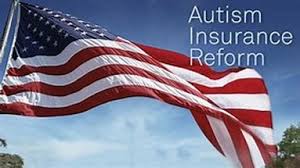Excerpts from my Extended Book Reviews of the books The Horse Boy (2009), & The Long Ride Home (2015); by Rupert Isaacson; with < My Thoughts > by Sara Luker.
Excerpts from my Extended Book Review of Rupert Isaacson’s book. (1% indicates location in the Kindle version of the eBook, instead of page numbers). Complete review to be found on website MENU.
The Horse Boy (2009) by Rupert Isaacson ~
Part One –
Isaacson, R. (2009) 1% April 2004 my son, Rowan, was diagnosed with autism. The feeling was like being hit across the face with a baseball bat.
Grief, shame – this weird, irrational shame, as if I had somehow cursed this child by giving him my faulty genes, condemned him to a lifetime of living as an alien because of me.
Isaacson, R. (2009) 9% The first time I took Rowan to the barn to saddle Betsy up, he ran amok…
…yelling and screaming and swinging his Woody and Jessie dolls around and around in both hands…
(I kept saddling Betsy) tightening the cinch and grabbing at her lower lip as I slipped the bit into her mouth.
“Do you want to get up on Betsy?” I asked him, not expecting a response.
“Up!”
It was the first time I’d received a direct answer to a direct question. I bent down, scooped him up, and put him in the saddle.
< My Thoughts> “Animals and nature were what motivated him.”
Fortunate are the parents who find the key to their child's motivating stimulus. Yes, Kristin and Rupert were able to kick-start Rowan’s imagination. They recognized her opportunity to draw Rowan into a world that they could share, the world of animals.
Sicile-Kira, C. (2014) tells us, “Individuals with autism often become fixated on a single thing, such as trains or airplanes. Use the strong motivation of the fixation to encourage activities. If you can identify the strengths you can focus and build upon them to motivate learning, to create opportunities to expand them to possible future interests.”
Isaacson, R. (2009) 13% Betsy – without question, that had been a miracle. Might there, I wondered, be some way of combining these two things – horses and shamanic healing? Was there a place in the world…? A place that understood the interplay between horses and healing…
… in my blind man stumbling way…did such a place exist?
Mongolia. The place where six thousand years ago, the horse had first been domesticated.
What if Rowan’s autism, instead of shutting down our lives, could be a gateway to the greatest adventure of all? What if that were possible?
What if we were to take Rowan there? Get on horseback and ride across that vast, primordial Mongolian grassland from shaman to shaman?
< My Thoughts > "What if that were possible?"
When dealing with autism, it is no surprise that families searching for the perfect quest, rise to different levels of inspiration and different levels of hope. In their eyes they feel that they have to “do” something… take action, right or wrong.
Isaacson, R. (2009) 13% “Rupert! We have an autistic child – a child who can’t even control his bowels, let alone his tantrums! And you’re saying that somehow, we’re going to fly to Mongolia, get on horses, and ride from shaman to shaman?
While Kristin dismissed it… I began to dream – and to plan.
14% …Rowan was growing so fast that in another year or so he might no longer be able to sit comfortably in the saddle with me.
17% The book proposal (requiring a trip to visit Mongolian shaman) I had sent out had been accepted. The trip would not bankrupt us after all, a few days later my proposal was accepted. We were going to Mongolia.
Reference:
Sicile-Kira, C. (2014). Autism Spectrum Disorder (revised): The Complete Guide to Understanding Autism; New York, New York: Penguin Random House Company.
by Rupert Isaacson; eBook Edition (2015).
Excerpts from my Extended Book Review of Rupert Isaacson’s book. (1% indicates location in the Kindle version of the eBook, instead of page numbers). Complete review to be found on website MENU.
Isaacson, R. (2015) 2% Tantrums like tsunamis, like storm fronts moving in from nowhere, erupting even in sleep. No language. My son floating away from me, absent, not there. So tantalizingly affectionate one moment and so lost the next.
1% The shaman Ghoste once told me, “Rowan will become gradually less autistic until his ninth year. Then, if you follow instructions, his autism will get less and less, and gradually disappear. But the stuff that’s been driving you crazy, the incontinence, the tantrums, these things will end now. From today.”
I tried to take this in, found I couldn’t. So, I just kept listening.
“But to make this happen,” he said, “You must make another healing journey to see a good shaman. It doesn’t have to be me, or in Mongolia even, but a good shaman, somewhere; the Bushmen you know in Africa. But one good healing journey a year for the next three years to make the healing complete…” I nodded, not knowing what to think… three more journeys.
2% I did notice one thing: my son became better outdoors. He tantrummed less, seemed happier, more ‘present’. So we spent hours and hours exploring the little trails in the woods behind our house in the Texas countryside.
< My Thoughts > “...my son became better outdoors.”
Sometimes, leaving the comfort of his room is a challenge for our Sonny. We find that having a ritual for going outside, helps. The ritual consists of putting on his sunglasses, his backpack with a communicator, and bringing a sippy cup for juice.
Note: Further information on 'adventure therapy' in my Free ASD Book: Know Autism, Know Your Child with < My Thoughts > by Sara Luker. Found on website MENU. Please see under UNIT 7– 7 Section 7: CAMs Complementary & Alternative Medicine
PART 4 –
7. creative therapy
a. introduction
b. art
c. music
d. dance, theatre
e. adventure therapy
NOTE: Learn more about Toileting, Theory of Mind (ToM), and Cognitive functioning listed on Navigation MENU, under UNIT 3 What Is Most Concerning?, in Chapter 3 APPENDIX A (Toileting) APPENDIX B (Theory of Mind) (ToM).
Isaacson, R. (2015) 43% In next to no time, off we flew from the UK and into – for us – truly uncharted territory.
47% “I don’t want Rowan to stop being autistic. Not at all; in fact I’m seeing so many gifts in his autism now that I honestly wouldn’t exchange his autism for normality. I just want him to be as effective and happy and successful as he can be.”
I began to dig around and found that there was surprising overlap between Western doctors, and shamanism healing. I even heard that Johns Hopkins Hospital had a faith healer on the children’s ward there.
< My Thoughts > "...shamanism healing."
Before there was traditional medicine, cultures found a way to 'heal' unwanted conditions.
According to Winkelman, M. (2009), the origins of ‘shamanisms’ takes us across the time and space of spiritual healing practices; both in a biological and social evolutionary way. He goes on to say that shaman healers and mediums are associated with hunter-gather societies and derived from the need to interact with spirits on behalf of the social community.
Winkelman believes that participating in these ancient rituals in an altered state of consciousness can induce healings and reduce aggression, producing a sense on ‘oneness’ with the universe. Shamans have evolved a form of hypnotic capacities which allow a connection between the unconscious and the conscious mind. Participating in these ceremonies, in human adaption and survival has assisted humanity in its evolution out of the ancient past, into the present, and on to the future existence.
Isaacson, R. (2015) 48% So next morning, as directed, we drove back to Mossman Gorge, this time driving on to the Aboriginal village.
49% Harold was waiting in the palm-thatch hut when, much, much later, we came down at last from the river pools. (Again, Harold performed his ritual on the second day.) As he flicked something that looked like slightly bloody mucus into a cup, Kristin asked, “What was that?” “Like I said,” Harold replied, “there’s some things I can tell you and some things that I can’t.” “Come back one more time tomorrow,” he said, “and that should about do it.”
50% “I feel better in my head. I feel happy.” Rowan had never said anything like that before. So that was that. The second healing done, we took our leave of Harold – “The young feller’ll be doing better now, you’ll see” – and headed out once more, south down the long coast road.
57% We still had one healing left to do, to complete Ghoste’s charge to us of making three more healing journeys after leaving Mongolia. We had fulfilled his instructions to the letter so far, and I wasn’t about to give up. I had already been planning this third, final healing journey, had it in hand. And the best thing about it was that we would not even have to leave the country to do it.
The final healing was set. Would it work? Would Rowan become conversational at last? Or again, was I just chasing butterflies here?
Reference:
Winkelman, M. (2009). Shamanism & the Origins of Spirituality & Ritual Healing; Equinox Publishing, Ltd. London SW3 5SR; V3.4, p 458-489.
Note: Complete Extended Book Reviews with < My Thoughts >, for both of Rupert Isaacson's books to be found on website MENU; plus, a LINK to purchase the books on Amazon.















 RSS Feed
RSS Feed